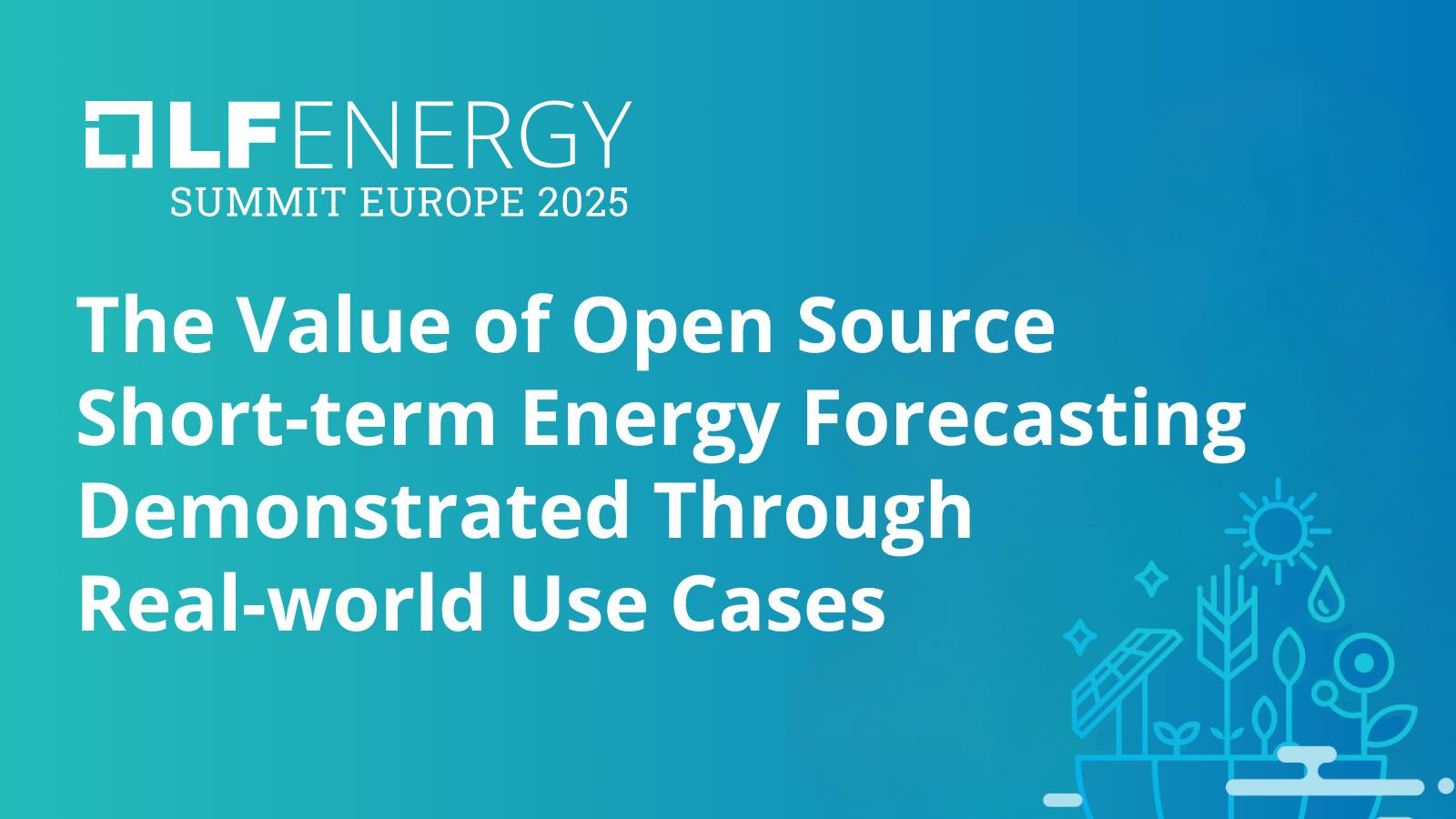The Value of Open Source Short-term Energy Forecasting Demonstrated Through Real-world Use Cases
Content Type: Event Recap
Event: LF Energy Summit Europe 2025
Session: The Value of Open Source Short-term Energy Forecasting Demonstrinated Through Real-world Use Cases
Speakers: Bart Pleiter (Alliander), Jan Maarten van Doorn (Sigholm)
TL;DR — Forecasting as Critical Digital Infrastructure
At LF Energy Summit Europe 2025, Bart Pleiter and Jan Maarten van Doorn showed how open, shared forecasting tools such as OpenSTEF are becoming essential for grid reliability, heat network optimization, and data driven planning across electricity and district heating systems.
Why Short-Term Forecasting Matters
The session opened with a clear message. Modern grids face rapid load growth, weather-driven variability, and operational uncertainty. Short-term forecasting, covering hours to days ahead, has become a core requirement for safe and efficient operations. OpenSTEF, LF Energy’s project for short term energy forecasting, provides automated pipelines that combine historical load data with external predictors such as temperature, weather forecasts, and price signals.
Pleiter emphasized that OpenSTEF is not a single model. It is a complete forecasting framework built for data preprocessing, feature engineering, probabilistic modeling, and post-processing. This flexibility allows operators to tailor forecasts to different grid levels and operational constraints.
Electricity Use Cases: Managing a Full Grid in the Netherlands
Alliander operates in one of Europe’s most congested grid environments. Large portions of the Dutch network have reached their connection limits, and thousands of customers wait for access. Physical expansion continues, yet short-term operational solutions are essential.
“We want to better utilize the grid that we currently have,” Pleiter explained, outlining several active use cases.
Congestion Forecasting
When new customers with flexible contracts are connected to constrained areas, operators must predict overloads one or two days ahead. OpenSTEF identifies peak hours that could violate asset limits, enabling pre-emptive flexibility activation.
Medium-Voltage Route Monitoring
State estimation is challenging because not all measurements arrive in real time. Alliander uses OpenSTEF to forecast missing data so that grid models such as Power Grid Model can estimate cable loading across entire MV routes.
Free-Space Forecasting
The grid is rarely full all day. Operators forecast available headroom at specific hours and allocate this capacity to charging point operators. This increases EV charging throughput without creating new risks.
Transport Forecasts for the TSO
As a customer of TenneT, Alliander must send day-ahead load forecasts for each coupling point. Unlike congestion use cases, this requires accuracy across every hour. OpenSTEF supports different model configurations to meet these requirements.
Forecasting Grid Losses
Forecasting total area load allows Alliander to estimate grid losses, which must be procured day ahead. This highly aggregated signal demands different features, including calendar effects. OpenSTEF supports these variations within a single framework.
Across all use cases, Pleiter highlighted the central theme: different grid objectives require different models, aggregation levels, and accuracy targets.
District Heating: Bringing OpenSTEF Beyond Electricity
Two years after working with Alliander, Jan Maarten van Doorn brought OpenSTEF to Sweden’s district heating sector through his work at Sigholm. District heating networks distribute heat from central production plants to entire cities, using a combination of biomass, electricity, waste heat, and fossil units.
Van Doorn described the operational challenge:
“You need to decide which unit to run, when to use the heat accumulator, and how to plan for maintenance or fuel constraints. Accurate heat forecasts are essential for all of this.”
Sigholm’s optimization platform, Aurora, relies on OpenSTEF to forecast heat demand at city scale. Temperature is a major driver, but social patterns such as hot water usage also play a role. OpenSTEF’s structure made it straightforward to adapt models for heat, and Sigholm has contributed improvements back to the project.
Today, the software optimizes heat production for over half of Sweden’s district heating output, with OpenSTEF providing the forecasting foundation.
Why Open Collaboration Matters
Both speakers emphasized the value of shared forecasting tools. Proprietary forecasting engines often duplicate work and create maintenance burdens. OpenSTEF enables a common framework that supports electricity and heat, real-time and day-ahead use cases, granular and aggregated signals.
“There is quite a variety in what we need from forecasting,” Pleiter noted,
pointing to the differences between congestion peaks, transport forecasts, and grid losses. OpenSTEF allows all of these to be built with one collaborative toolkit.
Van Doorn echoed the importance of community. Using OpenSTEF brought maintainability gains, forecasting improvements, and ongoing opportunities to extend models for new operational contexts.
A Shared Foundation for System Operators
The session closed with a clear conclusion. As grids electrify, digitalize, and integrate new heating and mobility systems, forecasting becomes a shared need and a shared opportunity. OpenSTEF provides a common platform that multiple organizations can build upon, improving accuracy, interoperability, and operational readiness.
Watch the presentation: The Value of Open Source Short-term Energy Forecasting Demonstrinated Through Real-world Use Cases
Learn more about OpenSTEF: https://lfenergy.org/projects/openstef/
About LF Energy
LF Energy is an open-source foundation within the Linux Foundation dedicated to accelerating the energy transition through collaborative software, hardware, and data initiatives.
Learn more at lfenergy.org.
Last updated 11/13/2025
